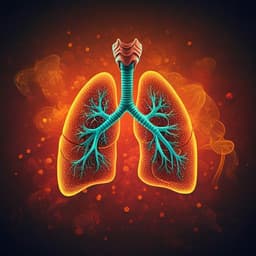
Earth Sciences
Bone collagen from subtropical Australia is preserved for more than 50,000 years
C. Peters, Y. Wang, et al.
This groundbreaking study reveals unexpected subtropical collagen survival in bones older than 50,000 years, challenging existing assumptions about protein preservation in palaeoproteomics. Conducted by a team of researchers, this work opens new avenues for understanding ancient proteins in diverse environments and time scales.
Playback language: English
Introduction
Ancient protein and aDNA analyses are vital tools in archaeological research, initially focusing on high-Arctic regions due to slow decay rates in cold conditions. Research has since expanded to lower latitudes and deeper timeframes, yet (sub)tropical biomolecular studies remain limited. Ancient proteins, compared to aDNA, show higher preservation potential in harsh environments. Bone protein, unlike proteins in tooth enamel or shell, is a mineralised composite affected by the burial environment. Low pH dissolves bioapatite, increasing biodegradation, while neutral or higher pH leads to more stable bioapatite, with degradation dependent on burial context factors, including pH and hydrology. Protein preservation in the archaeological record varies significantly between sites. The oldest peptides have been found in 6.5–9 Ma eggshell from northwestern China, and the oldest collagen peptides in 3.4 Ma high Arctic material. Predicting protein survival and degradation in open systems like bone is complex due to variability in water availability, pH, ions, and organic molecules. Arid environments might enhance preservation, while alkaline conditions accelerate decay. In bone apatite, alkaline pH doesn't dissolve the mineral, but DNA and proteins undergo accelerated hydrolysis. The predictive upper limit of collagen survival in bone was previously thought robust, with models predicting successful collagen recovery for radiocarbon dating in temperate environments. However, cases exceeding these predictions are intriguing. Previous studies on ancient bone collagen degradation focused mainly on temperate Eurasia and North America, with limited research on warmer, wetter environments assumed to be less favorable for long-term biomolecule preservation. This study addresses this gap by examining collagen survival in the Australian fossil record, leveraging Australia’s highly variable climate (tropical to temperate) and diverse depositional contexts (lacustrine, fluvial, swamp, cavernous) to investigate biomolecule preservation potential.
Literature Review
The majority of existing research on ancient protein preservation focuses on high-latitude and temperate regions, where cold and stable conditions favor the survival of biomolecules. However, this study emphasizes the need to expand our understanding of biomolecule preservation to (sub)tropical environments. Several studies have explored the factors influencing protein preservation in bone, including pH, temperature, humidity, and the presence of specific minerals. Previous predictive models for collagen survival, primarily based on temperate climates, are examined in light of the findings, highlighting the limitations of relying solely on temperature for assessing preservation potential. The existing literature also showcases the successful application of ZooMS and FTIR spectroscopy in identifying ancient proteins and assessing the level of collagen preservation in bone samples. The use of these techniques in previous studies allows for the comparison of findings with existing research in the field and establishes a common methodological framework.
Methodology
This study analyzed fossil bone from 17 Quaternary archaeological and palaeontological sites across Australia, encompassing diverse regions, depositional environments (cave, fluvial, lacustrine, swamp), and climatic conditions. Thermal age estimates were calculated for each locality using shallow and deep models (considering surface and deeper burial temperatures), incorporating paleoclimate data (MAT, mean monthly temperature, annual precipitation) from the past 120 kyr. Visual taphonomic assessments and FTIR analyses evaluated bone preservation, recording bone color and weathering stages. ZooMS success rates and collagen deamidation rates served as proxies for collagen preservation. FTIR analysis used a handheld FTIR with ATR diamond, measuring absorbance spectra to calculate the Amide I/phosphate (Am1/P), Amide II/phosphate (Am2/P), and carbonate/phosphate (C/P) ratios. Collagen extraction for ZooMS used an acid-soluble approach, followed by trypsin digestion, peptide purification, and MALDI-TOF-MS analysis. Peptide masses were compared to a reference database for taxonomic identification. Deamidation rates, calculated from MALDI spectral data using the Q2E package, provided a measure of collagen preservation (0 = fully deamidated, 1 = no deamidation). Statistical analyses (t-tests, Pearson correlation) assessed correlations between methods (FTIR, ZooMS, deamidation) and environmental factors (thermal age, depositional context).
Key Findings
Thermal age estimates for the localities ranged widely, with most exceeding 200,000 years even using a deep model, implying poor collagen preservation. However, ZooMS successfully identified 167 samples, showing considerable variability in success rates between sites. Millennium Cave and Devil's Lair had the highest success rates (100% and 85%, respectively), while several sites yielded no collagen. Deamidation rates ranged from 0.16 to 0.99, with significant variation across sites. High correlation (r = 0.97) was observed between average deamidation rates and ZooMS success rates, but not with thermal ages or FTIR results. This suggests that deamidation is a better indicator of ZooMS success than age or temperature. No correlation was found between thermal age and ZooMS success rates, indicating that successful collagen extraction occurred in sites with both young and old thermal age estimates. Similarly, bone weathering stages weakly predicted ZooMS success rates. Significant differences were observed in Am1/P and Am2/P ratios between samples with and without good collagen preservation. These findings question the reliability of previously proposed FTIR cut-off points for assessing collagen preservation. Regional differences in collagen preservation showed that caves had the highest ZooMS success rates across all regions of Australia. Open-air sites with carbonate-rich environments also yielded high preservation levels, contrasting with acidic environments. The exceptional collagen preservation at Tripot Cave (subtropical, Middle-Late Pleistocene) exceeded chemical predictions. While high ZooMS success rates were observed, these were not correlated with C/P ratios calculated from FTIR.
Discussion
The findings challenge the established view of collagen preservation primarily influenced by temperature. The study highlights the influence of other factors, like depositional environment and micro-environmental conditions, on collagen survival. The unexpected high success rate of collagen extraction from subtropical sites underscores the limitations of existing models based solely on thermal age and temperature. The exceptional preservation at Tripot Cave might be explained by the polymer-in-a-box model, where constrained fibril degradation and intimate collagen-mineral association enhance stability. However, the lack of correlation between collagen preservation and C/P ratios in Tripot Cave suggests that other minerals might contribute to the exceptional preservation. The need for a more comprehensive approach to predict collagen preservation is emphasized, potentially incorporating factors like geochemical conditions and the role of specific minerals in the remineralization process. The study also suggests the utility of non-destructive techniques like NIR spectroscopy for prescreening bone samples.
Conclusion
This study demonstrates the unexpected preservation of collagen in subtropical Australian bones older than 50,000 years, significantly exceeding previous predictions. The findings highlight the crucial role of micro-environmental factors and depositional context in addition to temperature. The exceptional preservation at Tripot Cave necessitates further research into the specific mechanisms of preservation, potentially involving mineral interactions beyond carbonate. Future research should focus on exploring collagen preservation across a wider range of (sub)tropical and other seemingly unfavorable sites, incorporating non-destructive techniques to refine preservation models and maximize the potential of palaeoproteomics.
Limitations
The study's sample size, while substantial, might not fully capture the spectrum of Australian environments. The reliance on existing paleoclimate datasets introduces uncertainty into thermal age estimations. Further research with more detailed geochemical data from key sites is needed to fully understand the intricate interplay of factors influencing collagen preservation. The study focuses primarily on collagen, and the preservation potential of other proteins in these subtropical environments could differ. While the study provides insights into collagen preservation, more research is necessary to fully understand the interplay of factors determining the survival of ancient proteins in diverse environmental contexts.
Related Publications
Explore these studies to deepen your understanding of the subject.







